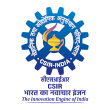Development and Promotion of Non-POPs Alternatives to DDT





The NCDVC programme has switched over from malaria control strategy to Malaria elimination strategy and accordingly the emphasis was laid on strengthening vector management strategies with the objective to reduce transmission of disease in different categories. For areas having perennial transmission (category 2and 3): Universal coverage suggested with LLINs of all sub-centres with API>1 and In sub-centres with APIs>1, if not covered with LLIN< two regular rounds of supervised IRS (sub-centre as unit). Anti larval measures are recommended in urban areas. In category 1, environmental management and modification in rural areas through Village Health Nutrition & Sanitation Committee (VHSNC), and in Urban areas by de-silting, de-weeding, channelizing, Larviciding, Biological control - larvivorous fish are recommended.
| Malaria Controal | Malaria Elimination | ||
|---|---|---|---|
| Vector Control | Category I | Category II | Category III |
| Anti-Adult | Strengthening entomological surveillance | Two rounds of IRS in areas of API > 2 | Universal Coverage with LLINs in areas >2API |
| Anti-Larval | case / foci based vector control with space / focal spray. | Anti-lavel measures in Urban areas | IRS if not covered with LLINs. |
| Biological | Integrated Vector Management (IVM) through VHSNCs. | IVM Strategy | IVM Strategy |
| Environmental | Biological control : Larvivorous fish | Monitoring Insecticide Resistance | |
| Legislative | |||